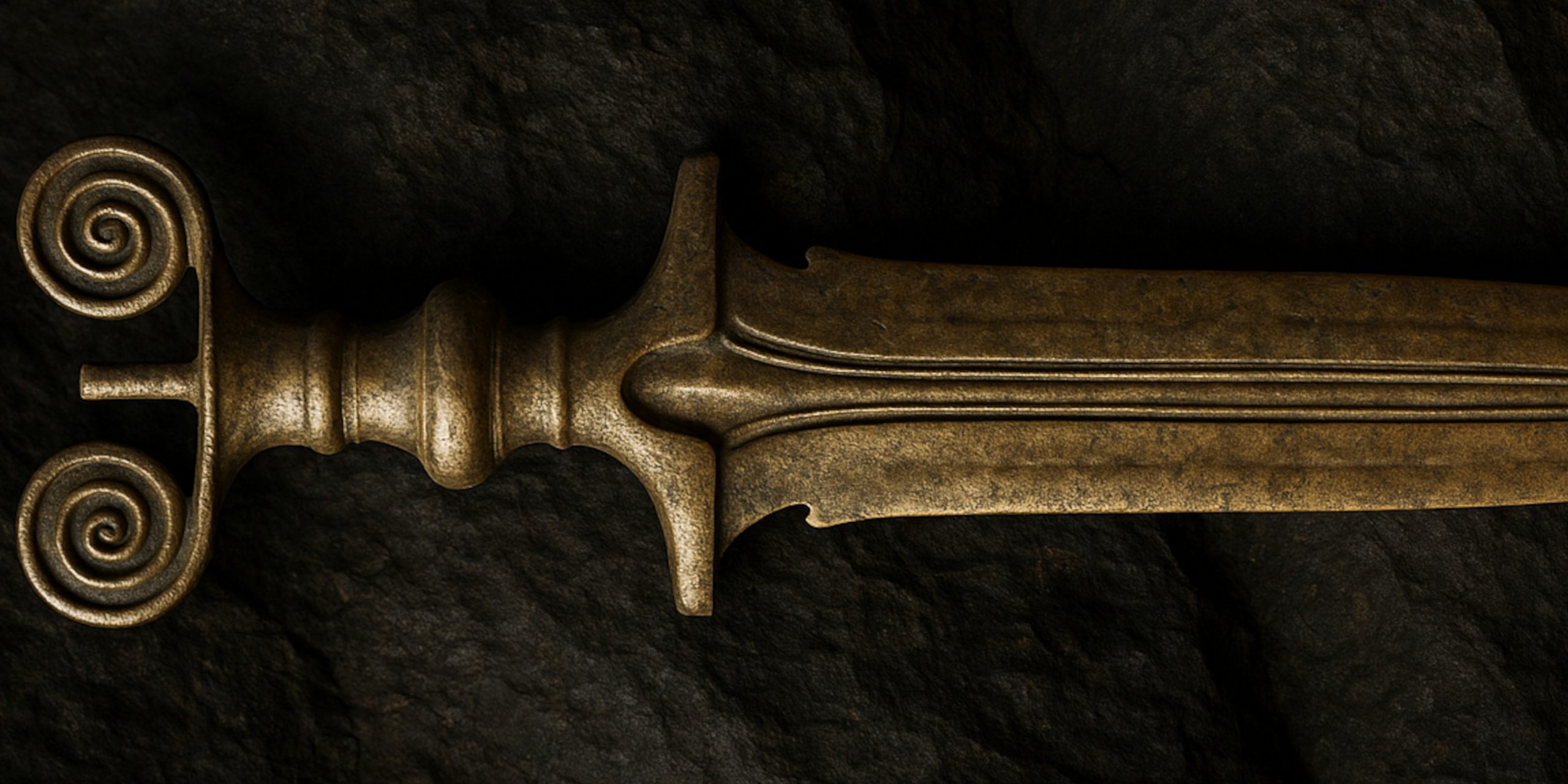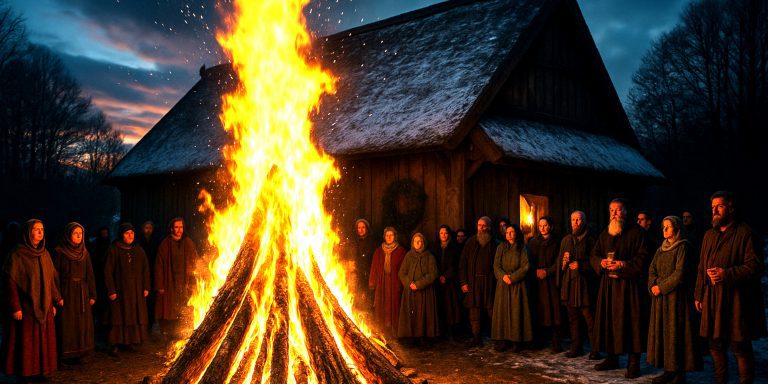
The Hallstatt sword stands as a defining example of early Iron Age weaponry, marking a transitional period between the Bronze Age and the martial cultures of later European history. Named after the Hallstatt culture of central Europe (circa 800 to 450 BC), these swords reflect a blend of utility, craftsmanship, and status.
The Hallstatt sword was used across much of central and western Europe during the early Iron Age. It represents the shift from bronze to iron in weapon making and showcases regional variations in blade design and hilt construction. Though influenced by earlier Bronze Age swords, Hallstatt blades are more refined in metallurgy and better suited to iron’s working properties.
Specifications
| Feature | Description |
|---|---|
| Period | Circa 800–450 BC (Early Iron Age) |
| Material | Primarily iron, with some early bronze forms |
| Blade length | Typically 60–80 cm |
| Blade type | Double-edged, leaf-shaped or straight |
| Hilt construction | Organic materials (wood, bone, horn), sometimes metal |
| Pommel style | Often minimal or ring-based |
| Fullers | Present in some later examples |
| Method of forging | Hot-forged iron, patterning rare |
History and Evolution
The Hallstatt culture extended through modern-day Austria, Germany, Switzerland, Czech Republic, and parts of France. It emerged from the Urnfield culture and later gave rise to the La Tène civilisation. Hallstatt swords reflect local variations and early experimentation with iron, leading to improvements in blade hardness and resilience.
The earliest examples closely resemble late Bronze Age swords in form, especially in the early Hallstatt A and B phases. Later, in Hallstatt C and D phases, the blades became narrower and straighter, with better-defined edges and stronger tangs. This evolution paralleled increasing warfare and the need for more durable arms.
Advantages and Disadvantages
Advantages:
- Improved durability over bronze swords.
- Better edge retention due to the iron composition.
- Adaptable blade shapes for both thrusting and slashing.
- Light enough for swift movements in close combat.
Disadvantages:
- Iron was harder to refine and work than bronze, making early swords inconsistent.
- Susceptible to corrosion, particularly in moist burial conditions.
- Lack of standardisation in early examples suggests some may have been as symbolic as functional.
Comparison with Similar Weapons
| Feature | Hallstatt Sword | Bronze Age Leaf Blade | La Tène Sword |
|---|---|---|---|
| Material | Iron | Bronze | Iron |
| Typical use | Thrust and slash | Primarily slash | Primarily thrust |
| Blade profile | Straight or slightly curved | Leaf-shaped | Narrow, pointed |
| Edge retention | Moderate to good | Lower | High |
| Region of dominance | Central Europe | Pan-European | Western and Central Europe |
| Hilt construction | Bone, wood, horn | Cast bronze with rivets | More standardised hilts |
Legacy
The Hallstatt sword represents a pivotal development in European weapon history. It was among the first consistently iron-forged sword types and laid the groundwork for later Celtic, Germanic, and Roman blades. Though later replaced by La Tène and Roman forms, its cultural significance endures in archaeological finds and reconstructions.
Where to See
Original Hallstatt swords and related artefacts are displayed in:
- Naturhistorisches Museum, Vienna, Austria
- British Museum, London, UK
- Musée d’Archéologie Nationale, Saint-Germain-en-Laye, France
- Landesmuseum Württemberg, Stuttgart, Germany
- Hallstatt Museum, Hallstatt, Austria
Many are accompanied by burial goods, shields, and early ironwork tools.
Collectors Guide and Auction Prices
Collector Appeal:
- Early Iron Age weapons are highly desirable for their rarity.
- Provenance is essential due to frequent forgeries.
- Legality of ownership depends on export/import laws and country of origin.
Typical Auction Prices:
| Condition | Provenance | Auction Price Estimate |
|---|---|---|
| Museum-grade, complete | Verified site | £15,000 – £40,000 |
| Fragmented blade only | Limited provenance | £1,500 – £5,000 |
| Restored examples | Partial context | £5,000 – £12,000 |
Private sales may see higher prices, but authenticity certification is critical. Due to cultural heritage laws, many high-end examples remain in museum hands or public collections.
The Hallstatt sword, while often overshadowed by more famous Roman and medieval counterparts, was a key instrument in the transformation of warfare in Iron Age Europe. Its balance between function and form, and its place in the transition from tribal to proto-state societies, mark it as a cornerstone of early European arms development.



